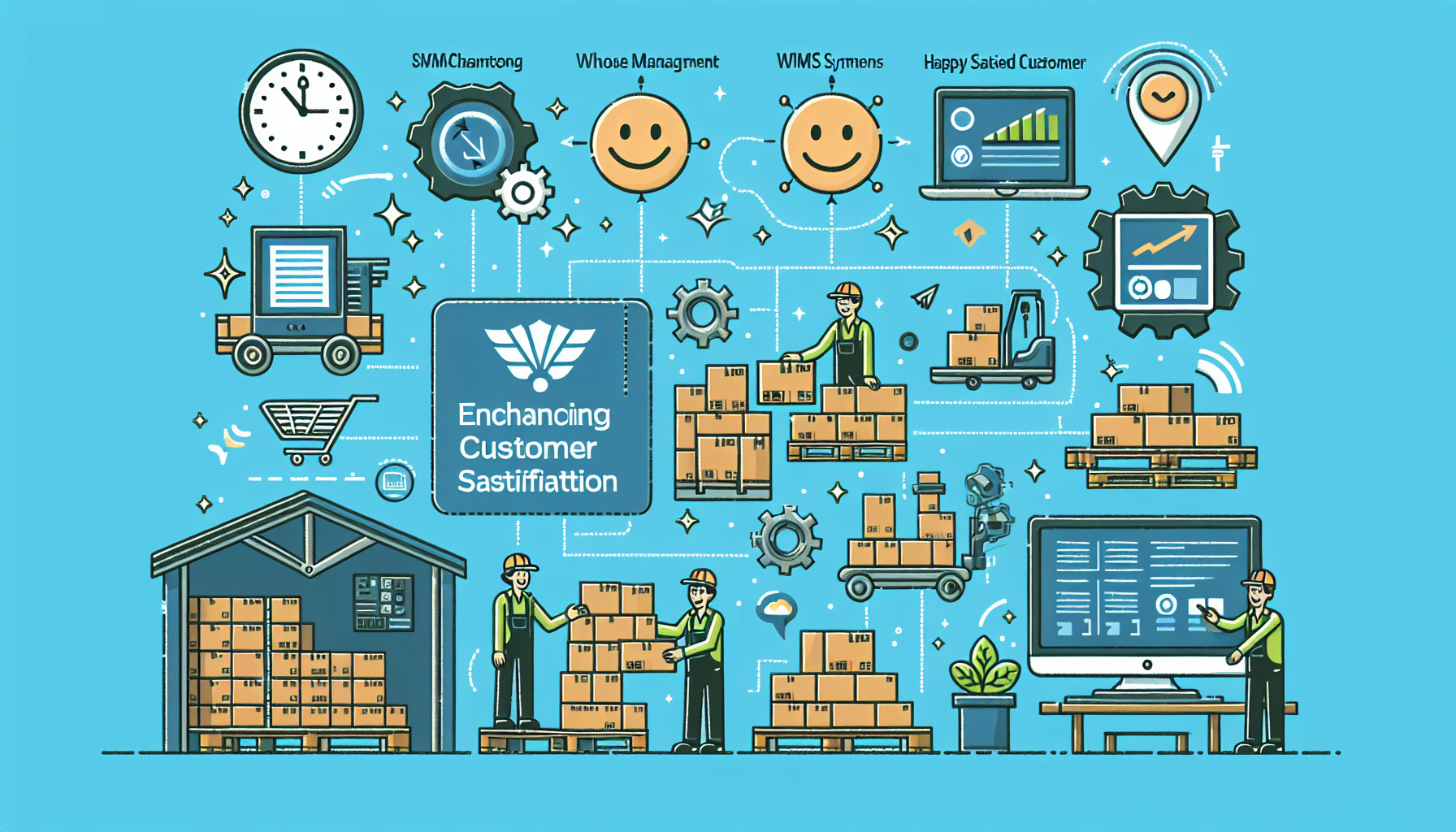Warehouse operations play a crucial role in the overall success of a business. From inventory management to order fulfillment, every aspect of warehouse operations needs to be optimized to ensure customer satisfaction. This is where Warehouse Management Systems (WMS) come into play.
What is a Warehouse Management System (WMS)?
A Warehouse Management System (WMS) is a software application designed to manage and control the day-to-day operations of a warehouse. It provides real-time visibility into inventory levels, automates key processes, and streamlines warehouse operations to maximize efficiency and productivity.
With the help of a WMS, businesses can improve customer satisfaction by ensuring on-time and accurate order fulfillment. Let’s explore some key ways in which a WMS can enhance customer satisfaction:
1. Improved Inventory Accuracy
One of the primary benefits of using a WMS is improved inventory accuracy. With real-time tracking and monitoring capabilities, a WMS enables businesses to have an accurate overview of inventory levels. This allows businesses to fulfill customer orders more efficiently and reduces the risk of stockouts or overstock situations.
A WMS also enables businesses to implement effective inventory control mechanisms, such as cycle counting and barcode scanning, to ensure accurate stock levels. By having the right products in stock and readily available, businesses can meet customer demands promptly, leading to higher customer satisfaction.
2. Increased Order Accuracy
Order accuracy is vital for customer satisfaction. With a WMS in place, businesses can automate order picking processes and minimize manual errors. This helps in reducing order inaccuracies, such as incorrect items or quantities being shipped to customers.
A WMS utilizes automated picking technologies, such as barcode scanners and pick-to-light systems, to guide warehouse employees in picking the right items for each order. This not only speeds up the picking process but also minimizes the chances of errors. By ensuring accurate order fulfillment, businesses can enhance customer satisfaction and reduce the number of returns or exchanges.
3. Efficient Order Processing and Fulfillment
A WMS streamlines the order processing and fulfillment workflows, leading to faster and more efficient operations. With features like automated order routing, wave picking, and optimized inventory storage, businesses can expedite the order fulfillment process.
By reducing order processing and fulfillment lead times, businesses can meet customer expectations for faster deliveries. This can significantly improve customer satisfaction, particularly in industries where speed is critical, such as e-commerce or retail.
4. Enhanced Visibility and Transparency
Customers value visibility and transparency when it comes to their orders. A WMS provides businesses with real-time visibility into order status, from the moment an order is placed to the point of delivery. This visibility allows businesses to communicate accurate information to customers regarding order tracking and estimated delivery times.
By proactively providing updates on order status, businesses can build trust and confidence with their customers. This level of transparency helps in managing customer expectations and reduces inquiries or concerns related to order delivery. As a result, customers receive a better overall experience, leading to increased satisfaction.
5. Effective Returns Management
Returns are an inevitable part of the business, and effectively managing returns is essential for customer satisfaction. A WMS can streamline the returns management process by providing businesses with the tools to track, process, and manage returns efficiently.
With a WMS, businesses can automate returns authorization, track returned items, and process refunds or exchanges quickly. The ability to handle returns efficiently not only improves customer satisfaction but also reduces the time and effort required to process returns, ultimately improving overall operational efficiency.
In conclusion, a Warehouse Management System (WMS) can significantly impact customer satisfaction by improving inventory accuracy, increasing order accuracy, enhancing order processing and fulfillment, providing visibility and transparency, and enabling effective returns management. Implementing a WMS allows businesses to optimize their warehouse operations, resulting in improved efficiency, productivity, and ultimately, customer satisfaction.
Interested in learning more about how HCO Innovations can help optimize your warehouse operations? Visit our website here to explore our warehouse optimization solutions.

